EBR charges a service fee to manufacturers to produce ebike reviews and videos, this began in 2018. It’s the same flat fee for each bike, and it helps us to keep the site going while limiting ad clutter. We appreciate the opportunity to serve you with our opinions and data but respect your right to know that we receive compensation :)
The Retroglide iE is a stylized cruiser electric bicycle being sold through a vast network of shops in North America, and now online directly through Raleigh with assembly support from Beeline. I visited the Raleigh NA headquarters for this review and conducted back to back test rides for a few different models, including the sister company IZIP’s E3 Zuma. The Zuma and Retroglide are very similar, but Raleigh has included beautiful steel fenders and rear rack. It weighs a bit more, and costs a bit more, but offers great utility. Functionally, these two ebikes offer approachability with smaller 26″ wheels, stability with wider 2.35″ tires, and comfort with swept-back handlebars, padded saddles, and padded grips. They’re perfect for neighborhood cruising. The IZIP E3 Zuma has an adjustable angle stem while Raleigh has opted for an adjustable height quill stem. I prefer the quill stem because it’s less likely to rattle loose over time. I was also impressed with the bottle cage bosses on the top tube whereas the Zuma had none. Raleigh is producing the Retroglide in a high-step and step-thru frame design with four color options (two colors for each frame type). It’s a purpose built electric bike with internally routed cables and custom motorized bottom bracket interface. The benefits of this drive system are improved balance and efficiency, if you shift gears thoughtfully. The TranzX motor isn’t as smart or responsive as Bosch, Brose, Yamaha, and some others… but it doesn’t cost as much, and has the option of being used with a trigger throttle, which Raleigh sells for $50. The trigger throttle installs easily and works from standstill, if you start in assist level zero. This is very unique for a mid-drive product. Both wheels offer quick release for easier maintenance and the Schwalbe tires have puncture resistant layers for durability. The 160mm mechanical disc brakes are just okay, it would be nice to have hydraulic for easier and more consistent braking, and it would have been nice to see motor inhibitors on both brake levers since the motor controller uses a cadence sensor only vs. torque or multi sensor. There are no light built in, but the bike comes pre-wired to add them later, and that’s pretty unique! For the price, you get a fancier CAN BUS electronics setup that is reliable and easier to troubleshoot in the event of an error, you get a nice dealer network with support for fitting and maintenance ongoing, and you get a comprehensive year long warranty.
Driving this bike is a 350 to 500 watt TranzX M16 GTA centerdrive that is horizontally mounted at the bottom bracket. This is one of the nicer TranzX motors, offering up to 60 Newton meters of torque, but it’s definitely a value part compared with the Bosch Active Line motors. By comparison, those motors weigh two pounds less, measure cadence in addition to rear wheel speed and torque, and offer shift detection to protect the drivetrain. They do not offer quite as much torque, and none of them are compatible with throttles at this time… so again, that’s a unique feature with the Retroglide here. The TranzX M16 stands out a bit visually, and some wires have been run below the motor casing (which exposes them a bit), but the ride quality is good. I especially appreciate how Raleigh has added a chainring guard within the alloy chain cover to reduce the potential of chain drops on over bumpy terrain. Protecting your pants or skirt ends is a beautiful paint matched cover that is mounted well but may produce some metallic ding noises if the chain bounces around in the low gears. You can hear this in my video review above. My guess is that this motor only supports pedal strokes up to 100 rotations per minute vs. some of the fancier motors that can reach 120 RPM. This means that you’ll have to shift gears more actively to hit different speeds, and without shift detection… there’s more of a potential for mashing and drivetrain wear. The maximum assisted speed is 20 mph (25 km/h), and that makes this a Class 1 product by default, allowable in the most locations and trails. If you opt for the plug-and-play trigger throttle, the bike becomes a Class 2 and may not be allowed on some dirt paths and bike trails. I actually really like the throttle option because I have a sensitive knee and like help climbing, starting from standstill, and simply taking a break. Older Raleigh models offered a press-button throttle, and I found that it didn’t offer variable-speed output and fatigued my finger more. All in all, the mid-motor here offer the benefits of efficiency, great climbing power, and good weight distribution.
Powering the bike motor, compact LED display panel, and two six-volt light wires, is a Lithium-ion battery pack that seats onto the downtube. The mounting interface feels solid and I like how the frame metal actually blends up and into the base for nicer lines. In terms of mounting, the pack slides in from the left, allowing for a lower top-tube design on the step-thru model. It only weighs ~5.8 lbs, but it offers lower than average capacity, for this generation of bikes (it’s about average for 2016/2017). The exact specification is 48 volts 8.7 amp hours for roughly 416.6 watt hours. By going with a 48 volt system, the Retroglide sends power more efficiently and can drive a higher amp controller for zippier starts. It’s a satisfying ride, and you can actually dial in the power amp output by holding the plus and power button on the display for a few seconds to adjust what they call “power trim”. The default setting for power trim is 5 but you can go down to 1 or up to 9 for more or less “zip” and gain that sense of power or ease off for efficiency. My guess is that the range on this ebike could be anywhere between 20 miles to 50 miles depending on whether you use the trigger throttle, ride at a higher level of assist, turn up power trim, climb steeper hills, or weigh a bit more than average and put gear on the rear rack. The good news is, the included battery charger is faster than average, putting out 3 amps vs. just 2. This gets you back outside riding in a jiffy, and the charger has a sturdy metal plug tip that won’t get bent or damaged as easily with years of use and accidental drops. The battery can be charged on or off the bike, and I’d recommend keeping it above 20% to avoid stressing the cell chemistry… extreme heat and cold can prematurely wear the cells, so I tend to store my ebikes in controlled temperature environments. The Raleigh Retroglide weighs an average 55lbs, which makes sense given the fenders, rack, fatter tires, larger saddle, and longer swept back handlebar. By taking the battery off, removing the quick release wheels, and quick release seat, the bike can become super light and compact for transport or servicing.
Operating the bike is a two-step process that requires pressing a rubber button on the left side of the battery before you can power up the display panel. This is a minor hassle, but could become frustrating if you’ve already mounted the bike and then have to bend way forward and down to reach the button. Once the pack is turned on, the control panel can be powered up with a second rubberized power button. It does a little startup dance before red numbers read out your current speed. Four red dots let you know your assist level (and the last level chosen seems to stick when turning the bike off and on again, which is nice), and three lighted LED colors communicate charge level. I do feel that it can be difficult and a bit confusing to base how much battery is left (and thus how far you can expect to ride with assistance) by looking at a 33% color representation… so it’s wonderful that there is also a five-bar battery readout on the side of the battery (activated by pressing the rubberized power button there) and a range estimator readout on the display itself. When you’re in one of the four levels of assist, simply tap the power button on the control pad to get a quick range estimate readout! This may display as miles or kilometers, but is not labeled as such. You can switch units by holding plus and minus simultaneously for a moment… then note that the lower number will be miles (since 1 mile roughly equals 1.6 kilometers). Unlike larger, fancier LCD displays, the compact LED unit on the Retroglide iE can be a bit small and hard to read, and leave off information about average speed, time, and odometer. The upside of being compact is that it’s less likely to get damaged from scratches or glare up into your face, and I quite like it… even if some of the menus are a bit buried. The range estimate is very handy and easy to remember (just tap that power button) and there’s even a Mini-USB port built into the right side of the control pad, for charging your smartphone or GPS on the go! In order to operate the trigger throttle with the display, you either need to be in level zero for instant power, or moving ~6mph in levels 1-4. It’s nice to have override like this. Having access to a throttle from standstill is very handy for getting help at a stop sign. I have sensitive knees, so instant start is great! However, I also want to conserve battery, so I tend to ride in assist level 2 or 3. The way it currently works (if you have the $50 throttle option) the minus key has to be pressed at each stop to get throttle help and then the plus key has to be pressed a few times to get back into pedal assist. Note that installing the throttle is very straightforward and easy, even without help from a shop. It just plugs into an extra cable up near the head tube of the bike :)
I have mixed feelings about the Retroglide because I love Raleigh, appreciate the classic design and two frame choices, and really enjoyed riding the demo bikes. There’s nothing really wrong with this ebike, but the price feels a bit high for some of the simple systems in place. The motor uses a cadence sensor but the brake levers don’t have motor inhibitors, the mechanical disc brakes are just average, I’m not sure if the high-step frame has bottle cage bosses, and if you order the bike direct… you’ll have to do some unpacking and assembly. I would love to see integrated lights included, and maybe have the throttle included as well. The pedals and kickstand choice are great, both being sturdy and functioning well, and I enjoyed the comfort. Even without a suspension fork, the bigger tires, longer handlebars, and soft touch points make this a pleasant ebike to ride. The rear rack looks nice, but isn’t as compatible with clip-on panniers and some racks because of the thicker tubing. There are special adapters you can get for child seats and many panniers and trunk bags use velcro and will fit just fine… but they aren’t as convenient. Every product has to balance value with performance and features. I trust the Accell group, perhaps the question is whether I’d opt for the less expensive stripped-down IZIP version or go with the Retroglide? It might come down to which dealer is closer, or maybe the weather where I lived. Big thanks to Raleigh for inviting me out to cover this product and partnering with me on this review. I welcome feedback and comments below or in the Raleigh electric forums.
Pros:
- Beautiful retro styling; the curved cantilever frame design, including built-on rack, looks vintage and is paint matched to the fenders and fork, note the brown battery sticker and matching saddle and grips, black spokes match black rims… lots of attention to detail here
- The frame is purpose-built, meaning that it has a custom bottom bracket to fit the mid-motor and was tested to handle the additional forces and weight, I love how the wires are gathered up front and then routed through the frame to look nicer and reduce snags
- The bike is setup for relaxed comfort with an adjustable height quill stem, swept-back handlebar with padded grips, large sprung saddle, and high volume balloon tires
- Mid-frame battery and mid-drive motor position weight low and center for optimal balance, they free up the rear rack completely and allow for quick release wheels that are easier to service
- Raleigh is offering this ebike in two frame styles including step-thru and step-over, the former is easier to approach and stand over for petite individuals and the latter is stiffer and more masculine looking
- The bike comes in four colors, depending on frame style, I appreciate the bright white step-thru because it will be more visible in dark riding conditions, even the gray is better than pure black, and they both come with reflectors
- The 7-speed Shimano Altus drivetrain is one step up from the base component group, meaning it should be lighter and more reliable, the 12-32 tooth cassette range is great for a neighborhood or city cruiser and should climb effectively if you shift gears thoughtfully to empower the mid-motor
- Excellent pedal choice here, Raleigh chose large grippy platforms that feel comfortable and worked well during my ride test, I also like the kickstand they chose and appreciate how it’s mounted far back on the frame to support the rack and cargo while reducing foot strikes and pedal lock
- Raleigh has been around since 1887 and built positive reputation in the UK, where it began, I have been reviewing their ebike products since 2014 and appreciate the vast network of dealers and one year comprehensive warranty (2 years on the motor lifetime on the frame)
- The display panel is compact and simple, it blends in and won’t get damaged as easily as a bit LCD display panel but still shows your assist level, battery level, and even range! I like that you can adjust how much power the system runs with
- Schwalbe makes excellent tires that tend to be reliable, the Fat Franks that come with this ebike have K-Guard 3 protection to stop thorns and other sharp objects from puncturing the tubes within
- The 26-inch wheels bring this bike frame lower to the ground and the wide 2.3″ tires provide stability and rolling momentum which is perfect for relaxed cruising
- Raleigh designed the frame with a raked out fork to keep the front wheel and fender out of your pedal path and the seat tube angle is pretty aggressive back, so you can get good leg extension without raising too high up
- The step-thru model had bottle cage bosses on the top tube! I was expecting to also see some on the high-step but perhaps the demo bike that Raleigh loaned me for review was missing them? You could always use an SKS anywhere adapter or other bottle cabe mount on the seat tube to carry fluids, folding locks, or other accessories
- The wheels are designed with more spokes, 36 vs. 32, and the spokes themselves are thicker, 13 gauge vs. 14 gauge, so I’m guessing that it can handle a bit more weight and is just sturdier than many other ebikes
- The battery charger puts out 3 amps vs. just 2 amps on most ebike chargers, so it should fill the battery a bit quicker, I like how the end piece is metal vs. plastic, so it’s a bit tougher as well
- Raleigh did an excellent job with this battery design because it tips out to the side vs. clicking up (which requires a higher top tube and is easier to drop in my experience), I like the handle design at the top of the pack, making it safer and more secure to carry around, and there’s a fuse built in so it’s safe and easier to repair if something goes wrong
- All of the electronics are connected to a CAN BUS system, like many automobiles, so diagnosing issues is much easier for shops, they don’t have to guess which saves time and money when issues arise
- I really appreciate that Raleigh offers an optional trigger throttle for this electric bicycle, it allows people with sensitive knees and hip joints to get started easier or relax on longer rides… you have to pay $50 for the trigger throttle and then arrow down to zero for it to work from standtill, otherwise the bike has to be moving for it to override in assist 1-4
Cons:
- While the fenders and chain cover will keep you dry and clean, this ebike does not come with integrated lights for added safety… I’ve heard that some Raleigh dealers can add them aftermarket because the frame comes pre-wired, or you can attach rechargeable aftermarket lights like these, it’s awesome that the display has a built-in Mini USB port for charging third-party accessories like these or your smartphone for GPS
- I was surprised that this ebike does not have motor inhibiting brake levers because the motor controller uses a cadence sensor vs. torque or multi sensor, most comparable products I’ve tested do have motor inhibitors built in and that allows them to stop slightly quicker
- Frankly, the brakes are just okay… with smaller 160mm disc brake rotors and mechanical actuation vs. hydraulic, they require more hand force to stop and aren’t as adjustable
- The alloy chain cover and steel fenders add weight, this electric bicycle is roughly 55lbs, which is above average, but the steel fenders won’t dent or ding as easily and also don’t rattle as much… be careful not to scratch them too much because they could rust
- The battery capacity is slightly below average for the current generation of ebikes at 417.6 watt hours vs. 500 watt hours, but it runs at 48 volts which offers more efficiency and power
- The big Shimano thumb shifter is not my favorite shifting mechanism because it requires more hand dexterity and finger force than little triggers, however it’s intuitive and works well if you have big fingers or are wearing gloves, they probably specced this part so that you could add the optional trigger throttle on the right without crowding the shifter
- The rear rack looks very sturdy and I like the curved support arms, that match the curved frame design, but the thicker tubing probably isn’t compatible with most clip-on panniers so it could limit your bag choices a bit, if you want to add a child seat, you may need something like this to adapt the rack and make it compatible
- The motor controller listens for cadence only and does not offer shift detection, I’m not certain about the peak RPM but it could be lower than 120 which means you’ll have to shift more frequently to reach the full range of speeds… it’s just not as fancy as some other mid-drive systems
- Powering the bike on is a two-step process, starting with the battery pack and then the little control pad, I like that the battery offers a 5-LED readout for charge level but the display only offers red, yellow, and green which doesn’t communicate much precision
- The fenders were solid and quiet but the aluminum alloy chain cover did make some noise on bumpy sections when I was pedaling in the lowest level of assist because the chain bounced up into it… I did see a clear sticker slap guard to protect the chain stay paint, which was nice
Resources:
- Official Site: https://www.raleighusa.com/electric
- More Pictures: https://photos.app.goo.gl/wK4rQC2ReHG3hBTTA

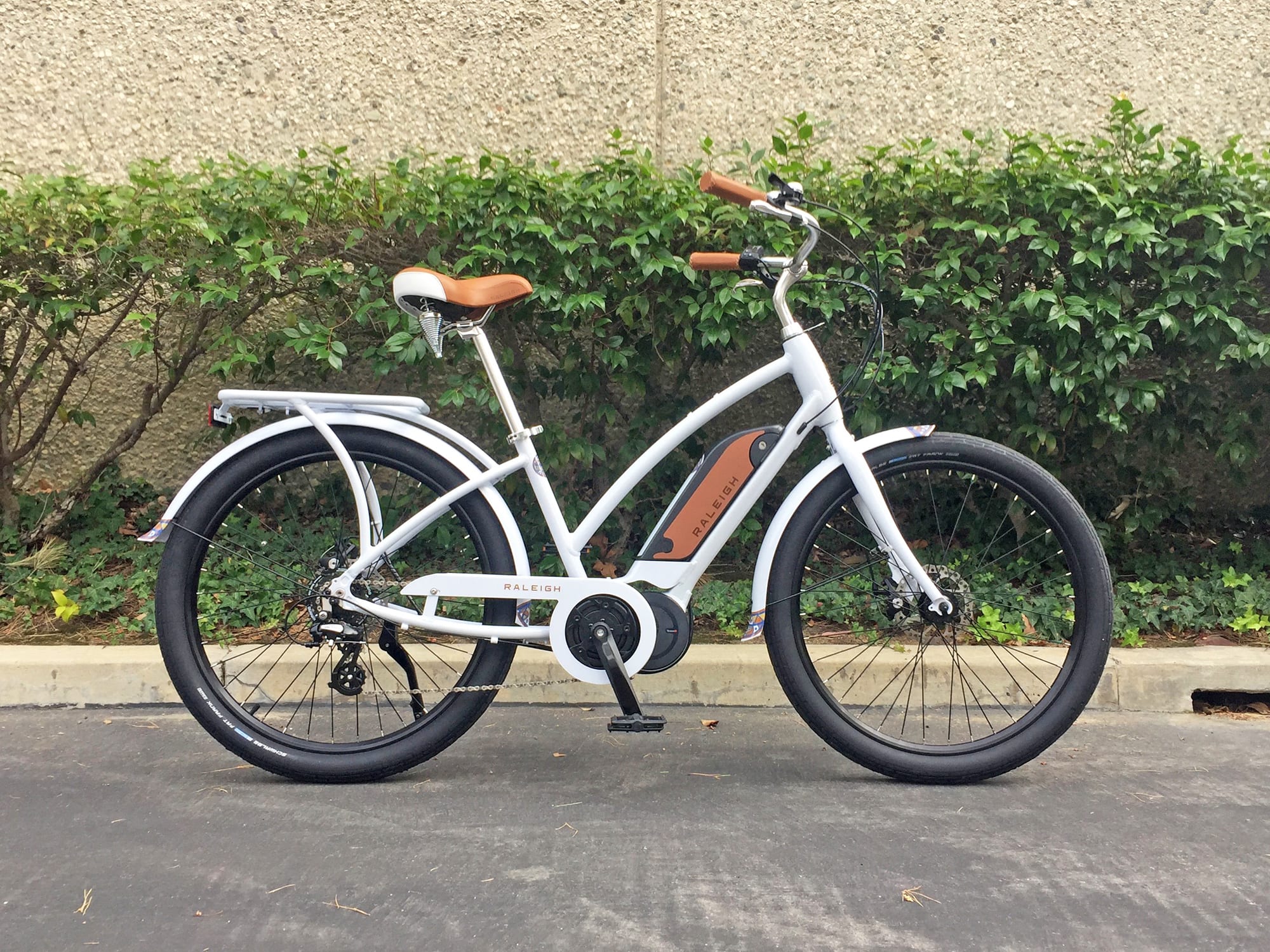

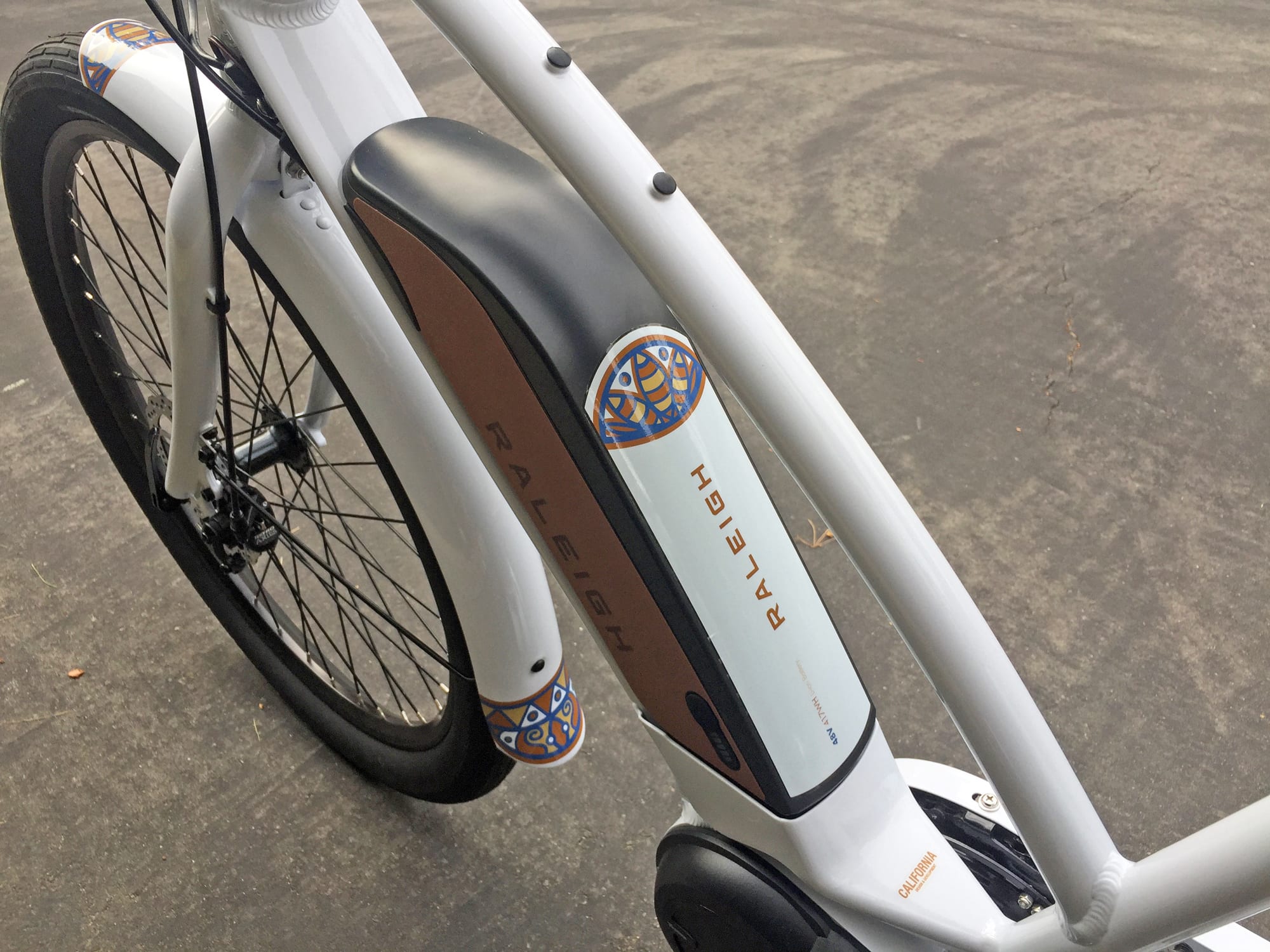

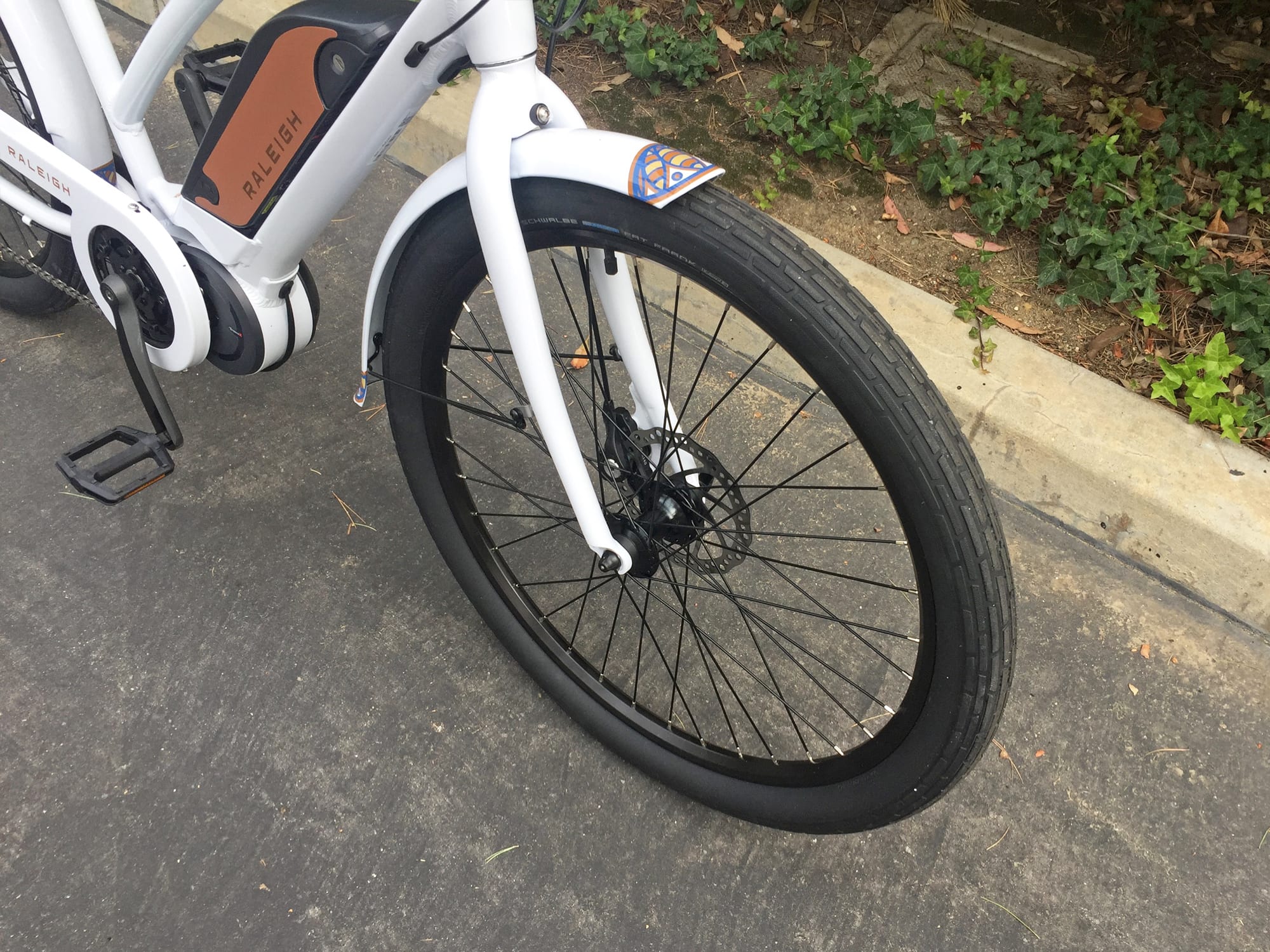

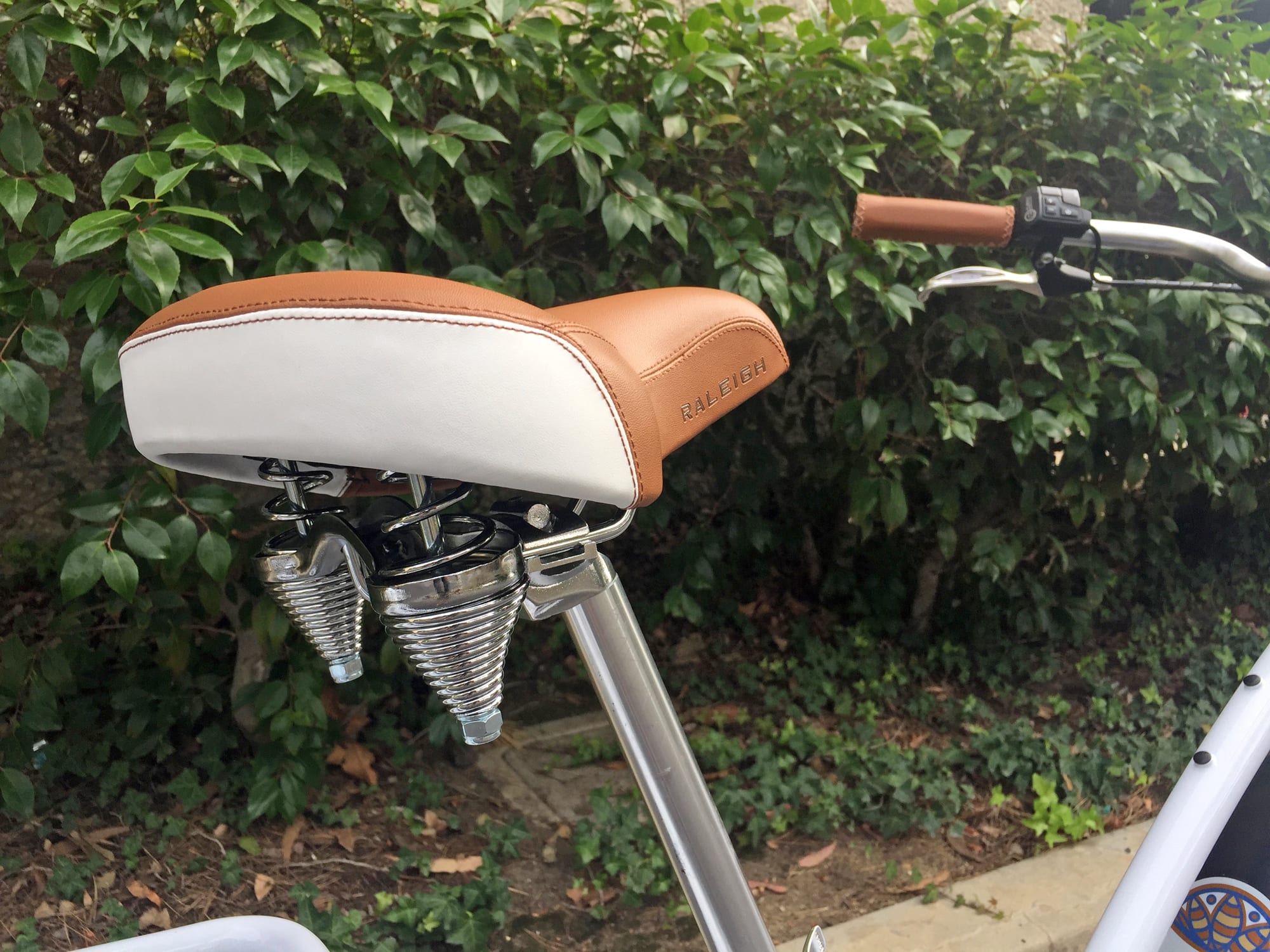

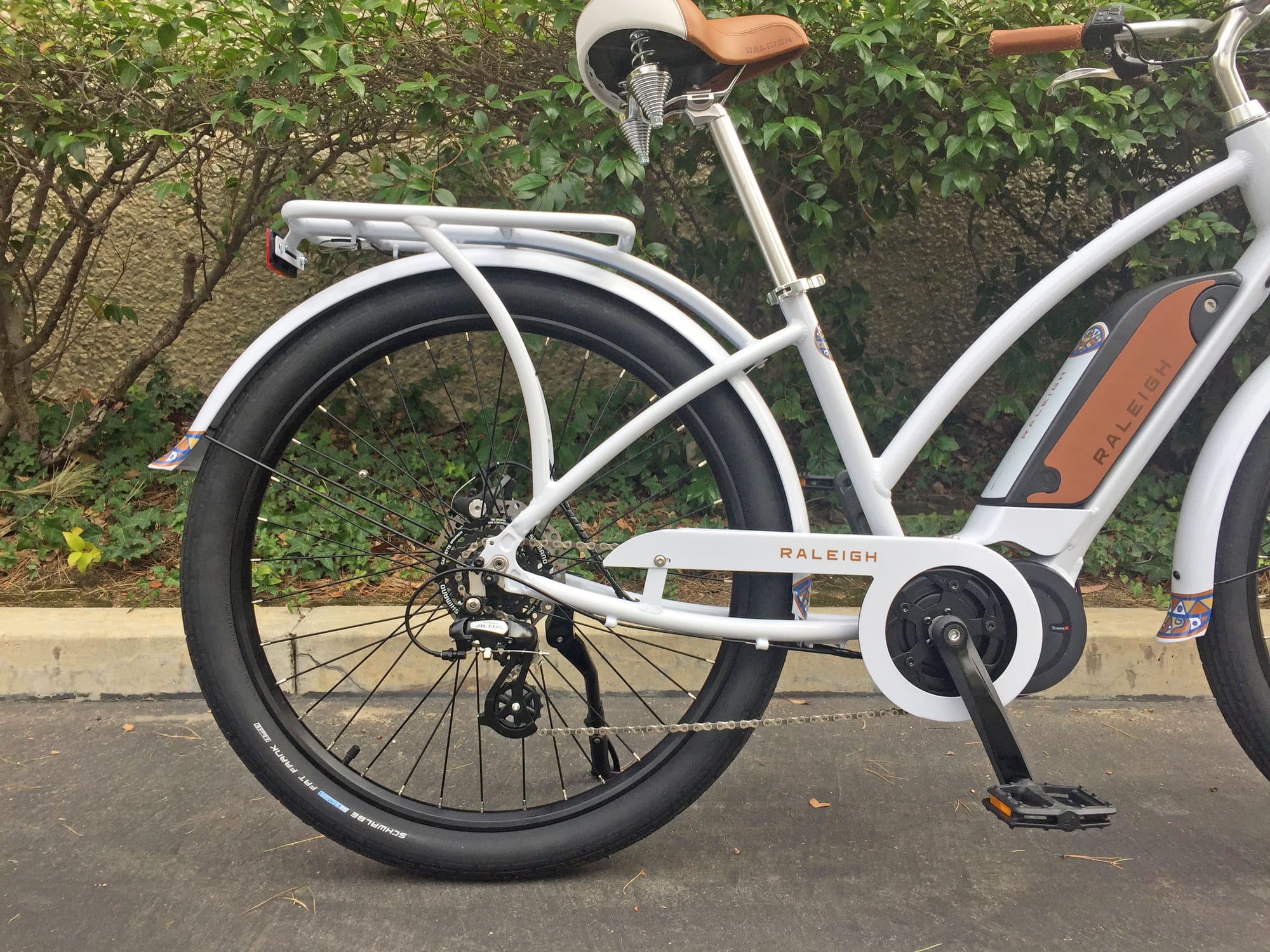
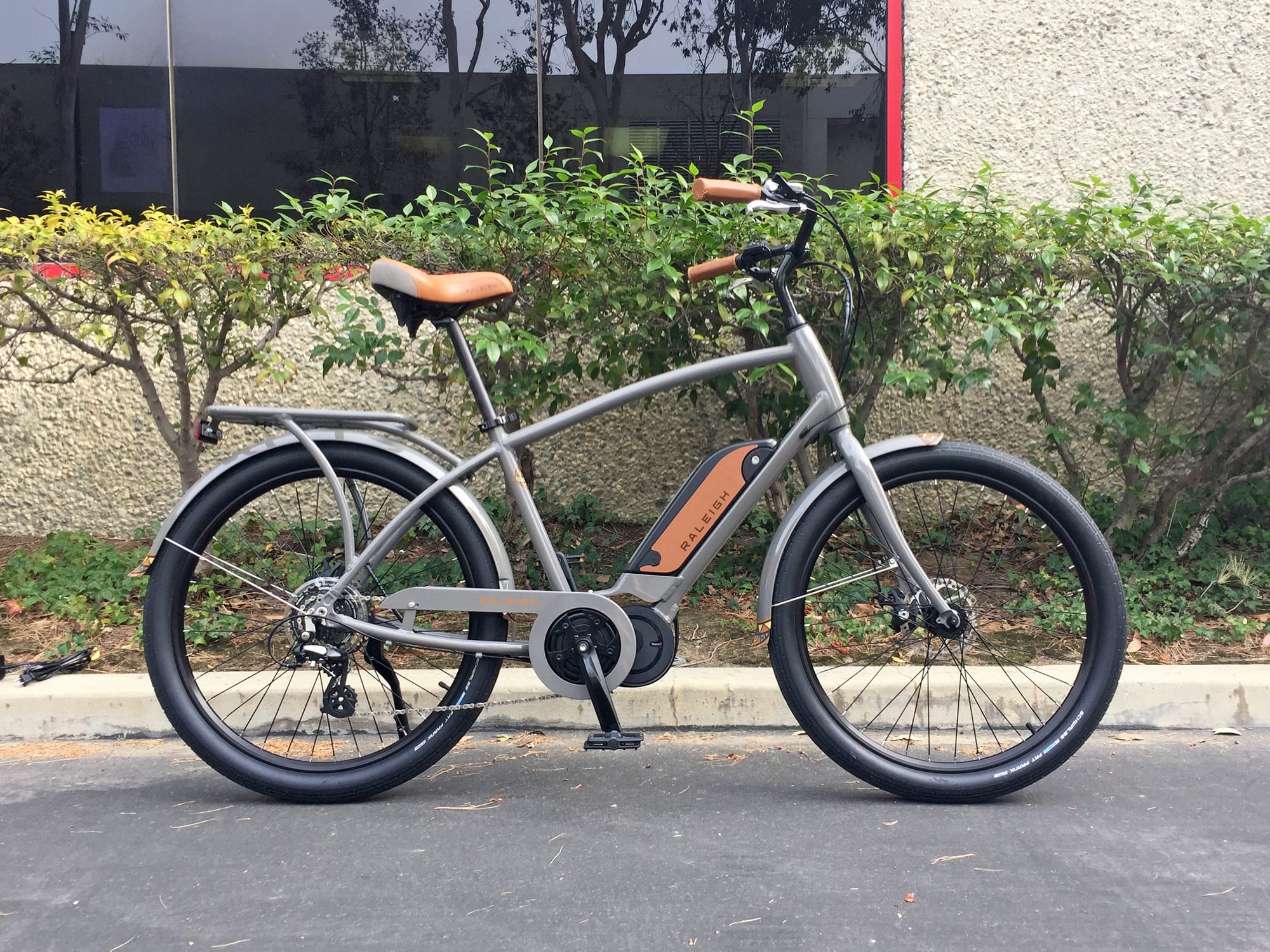

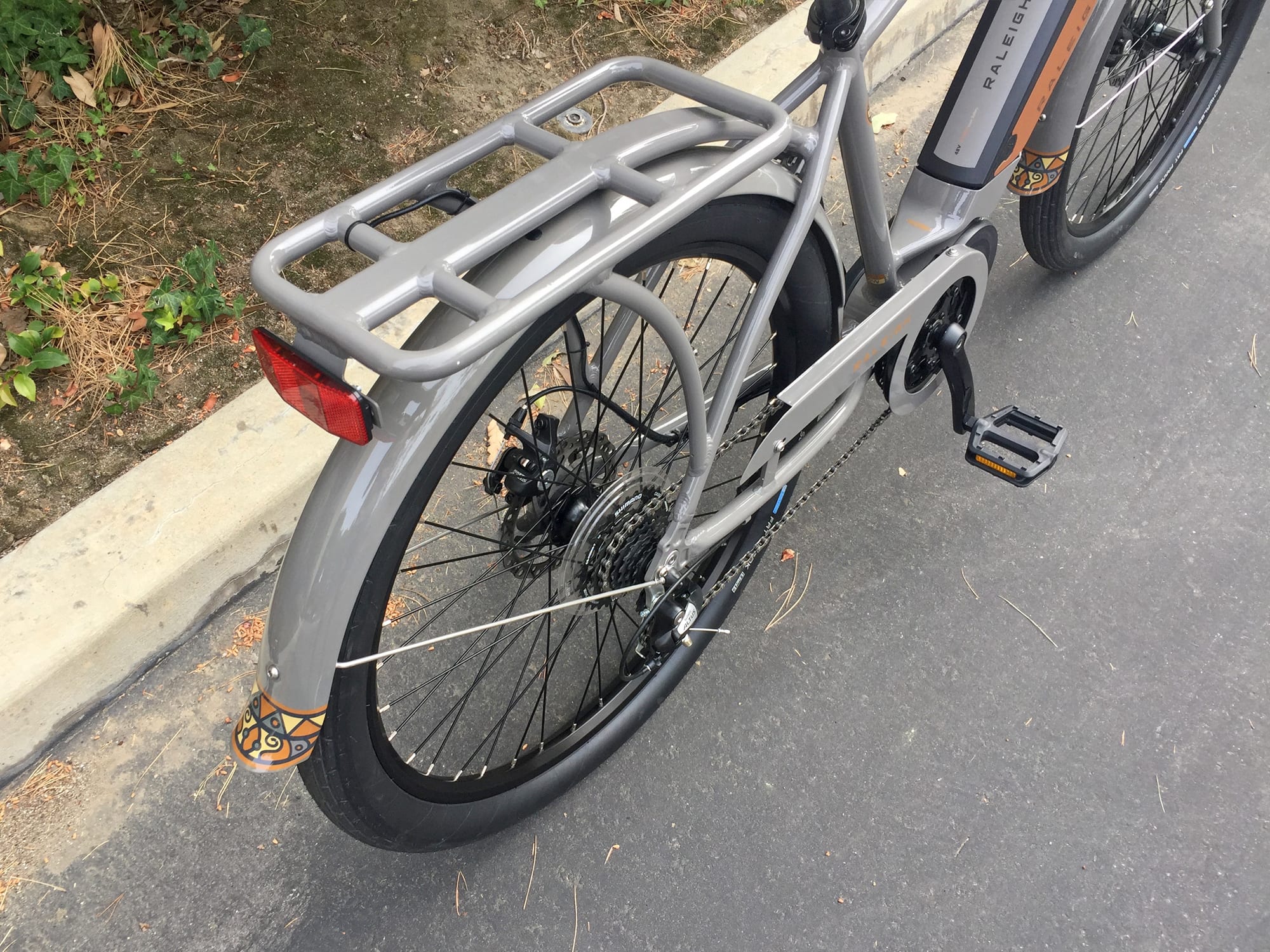
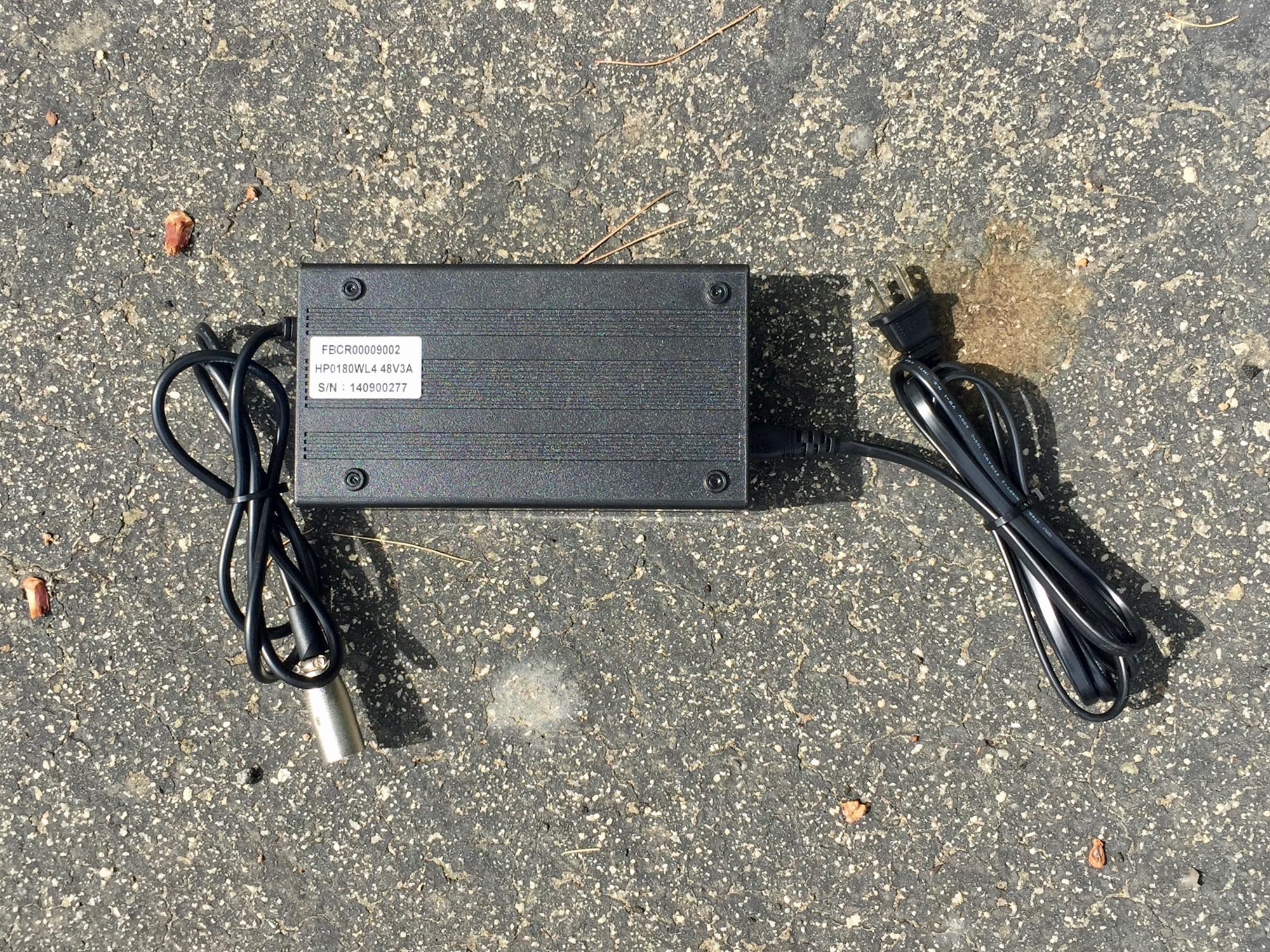



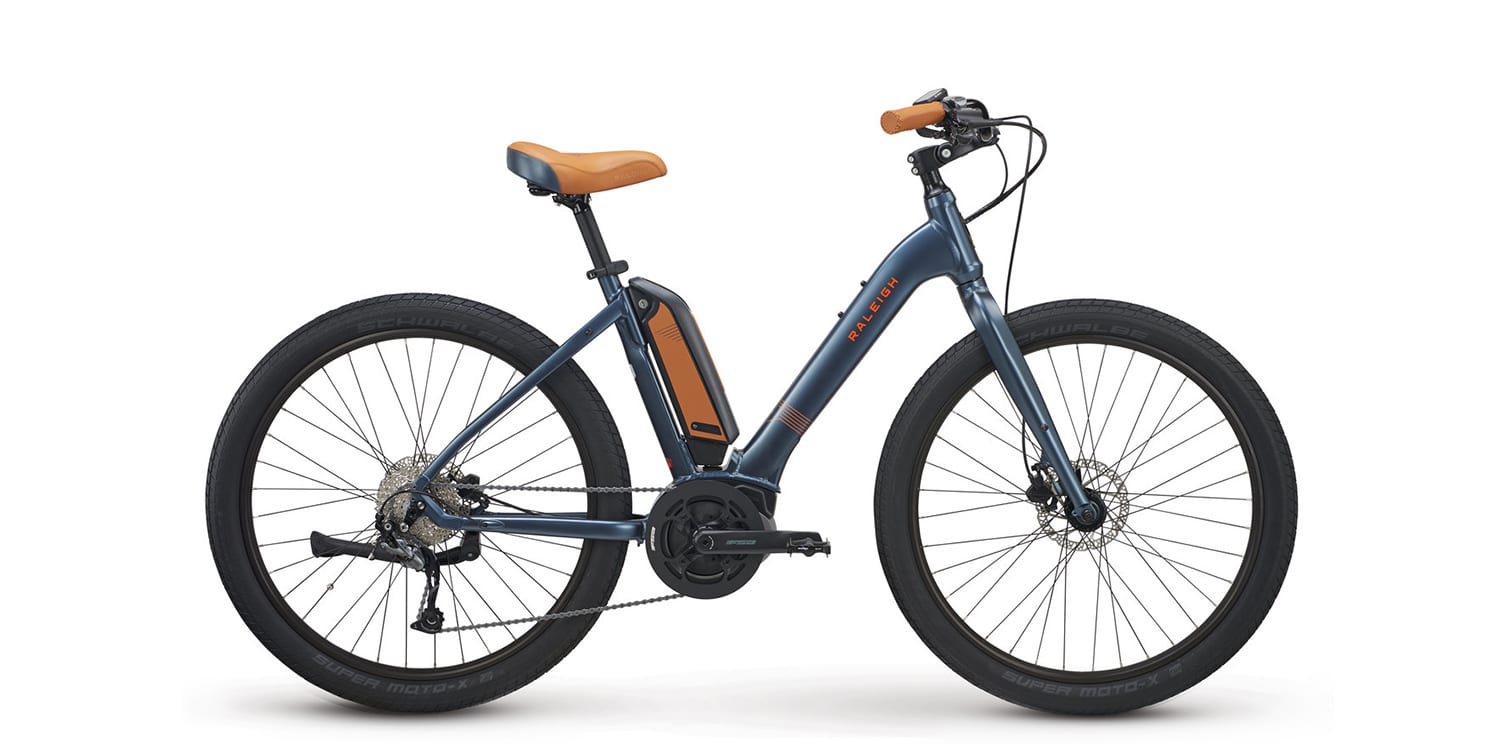
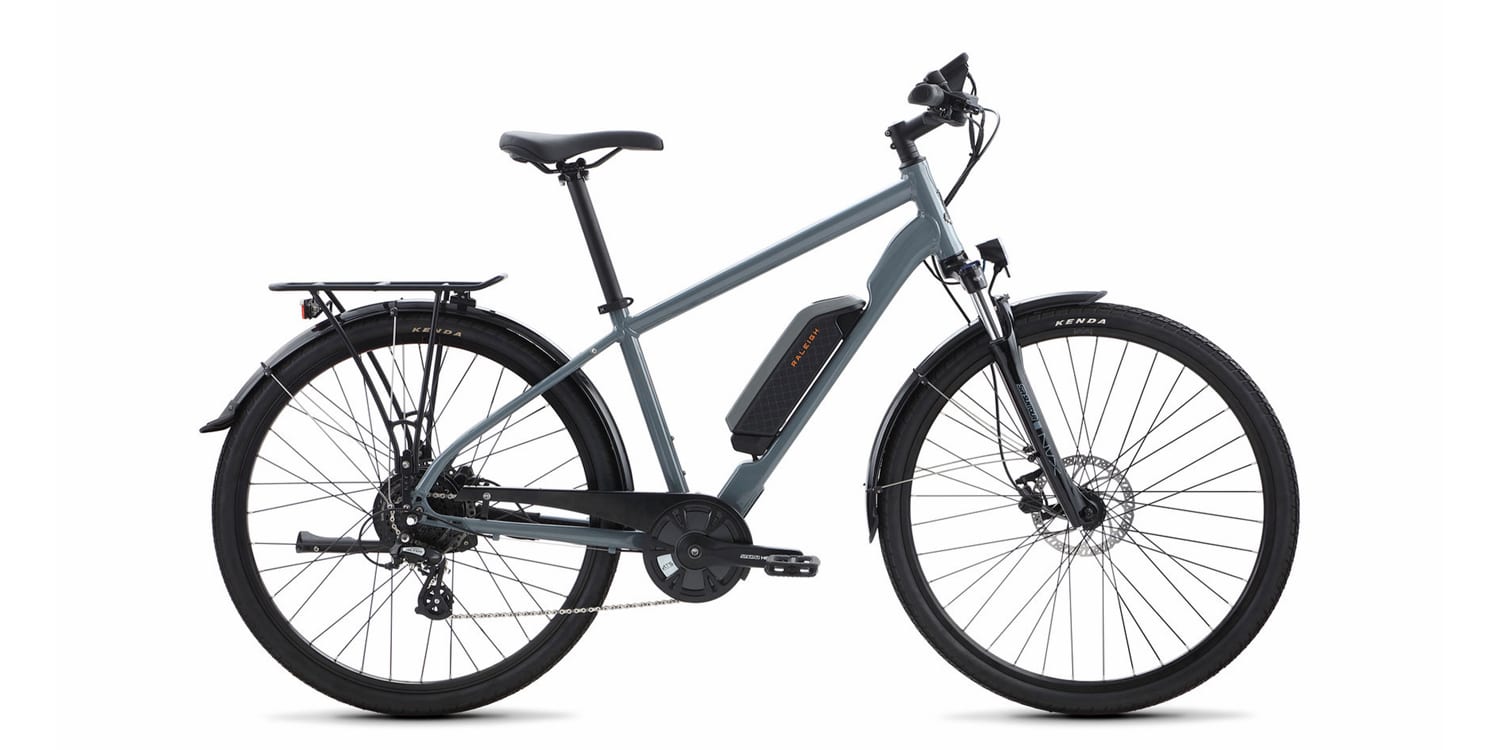
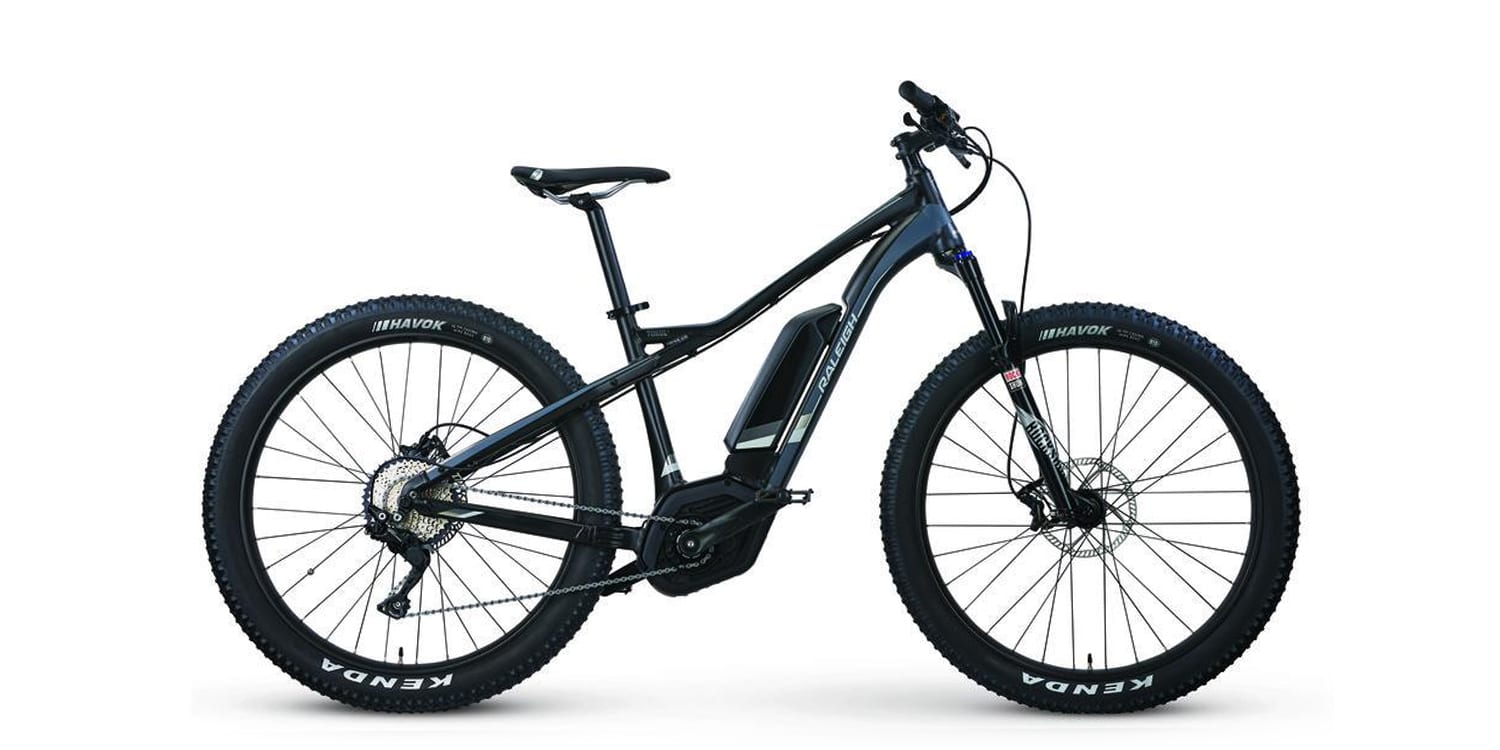

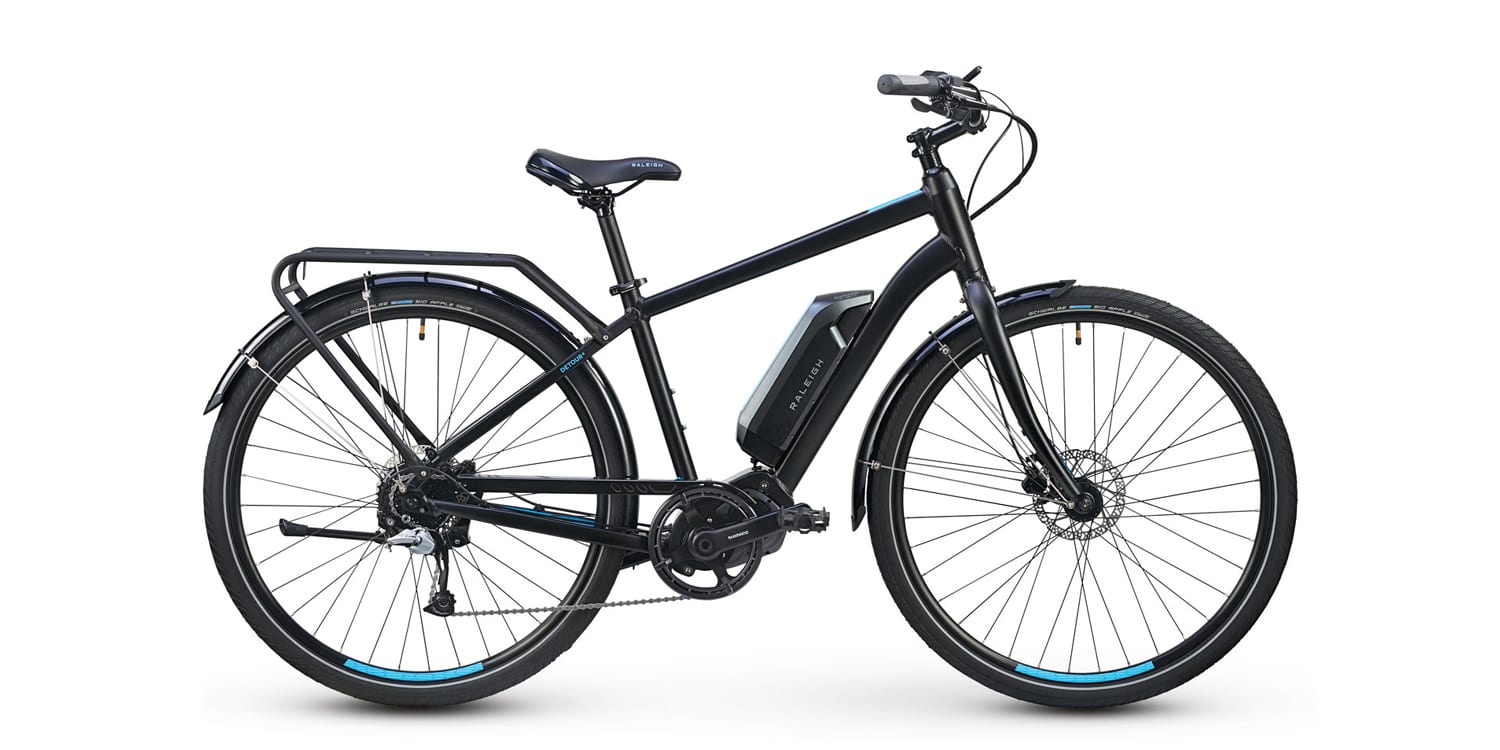
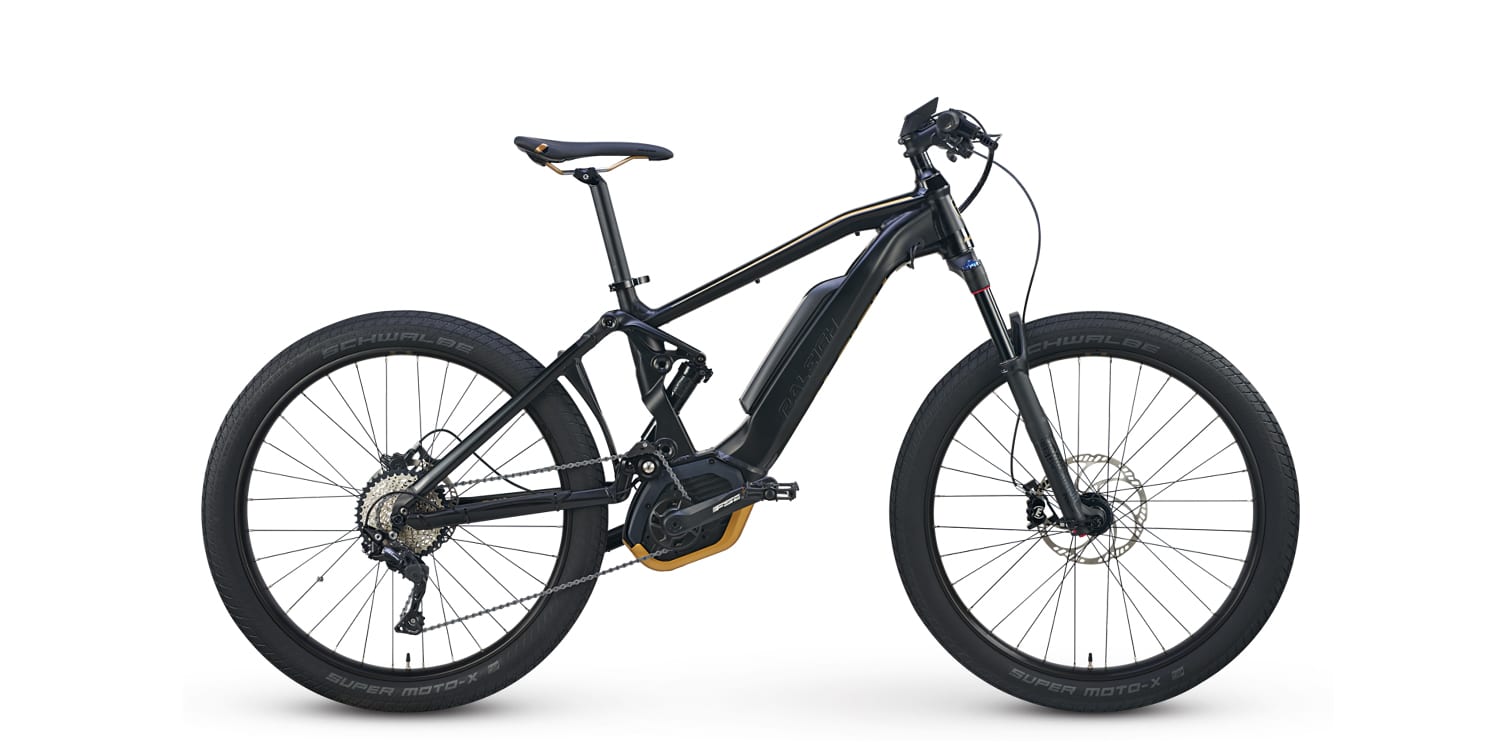
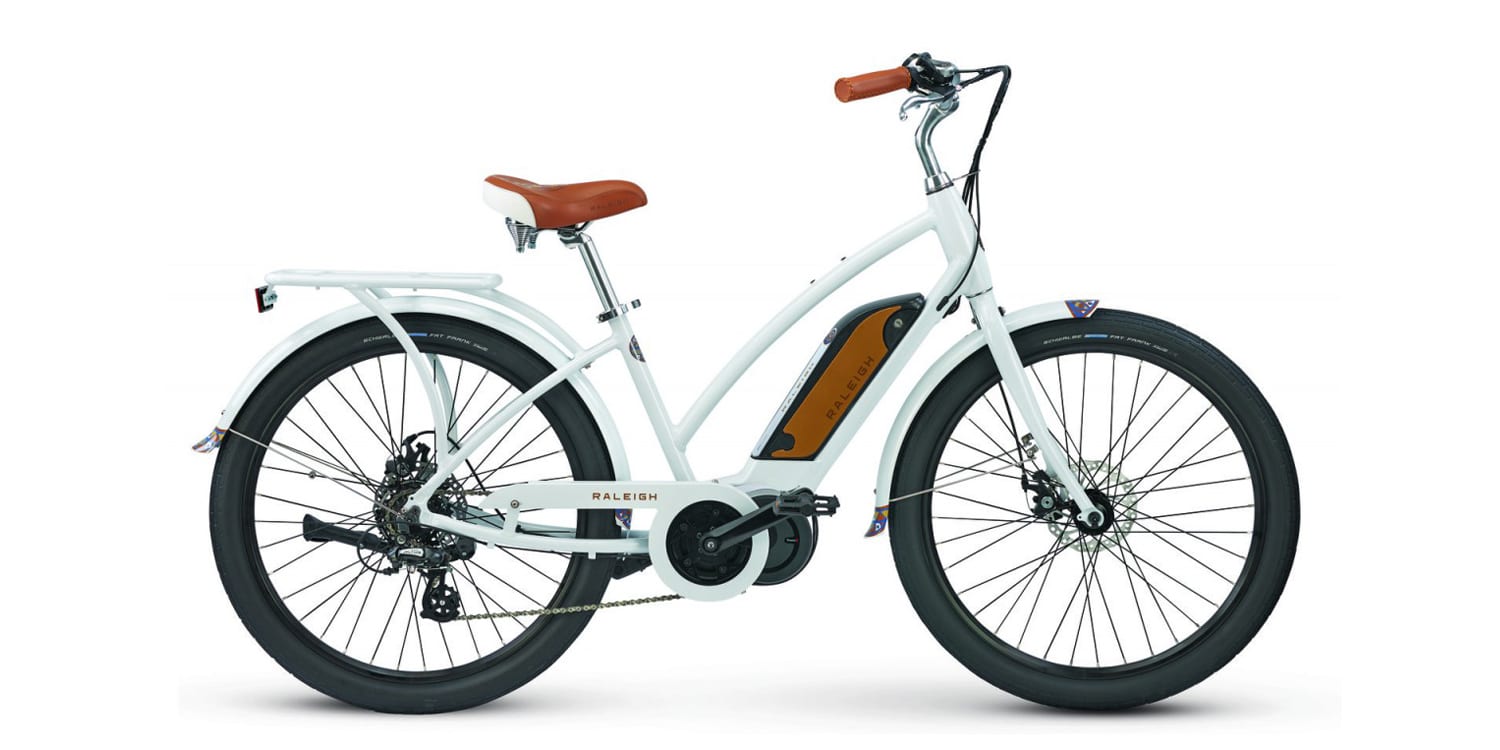
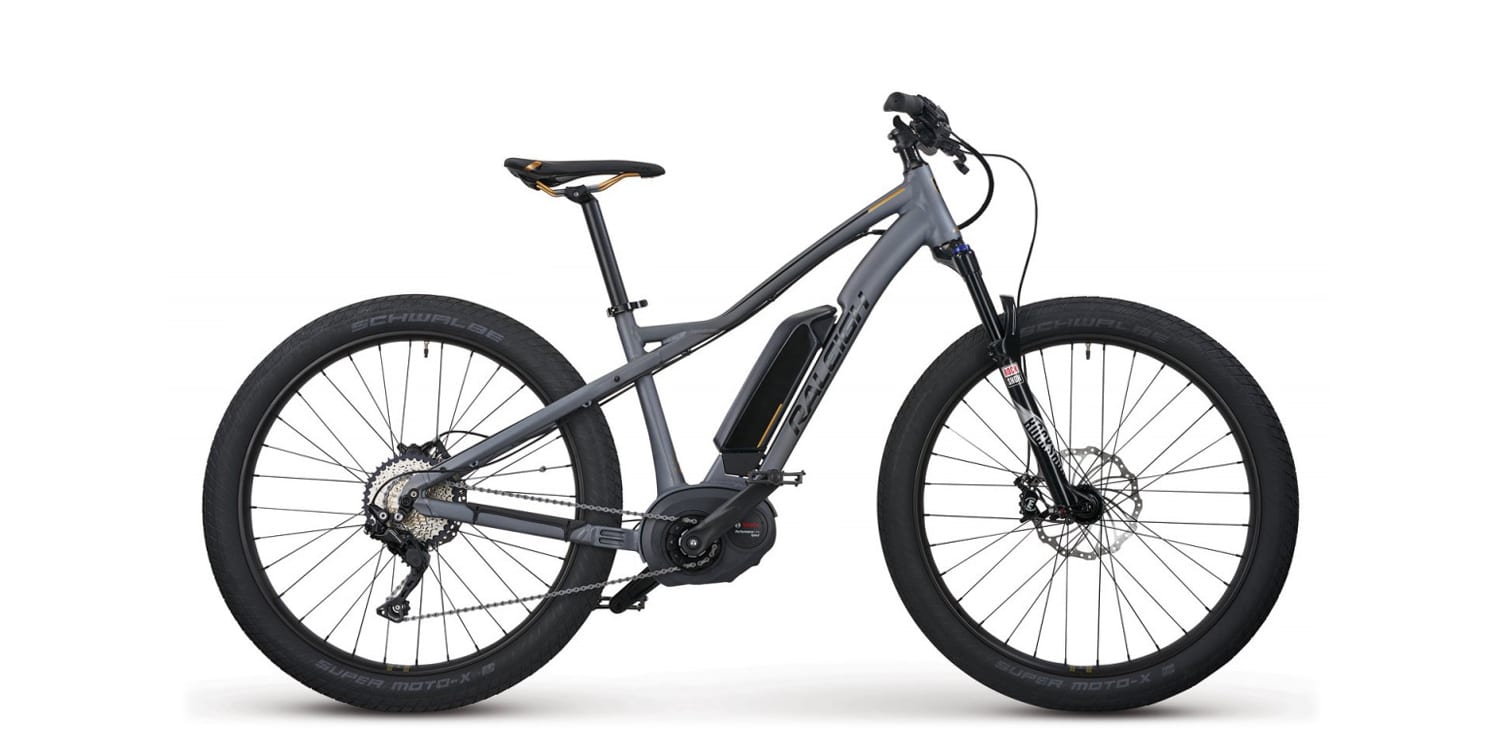
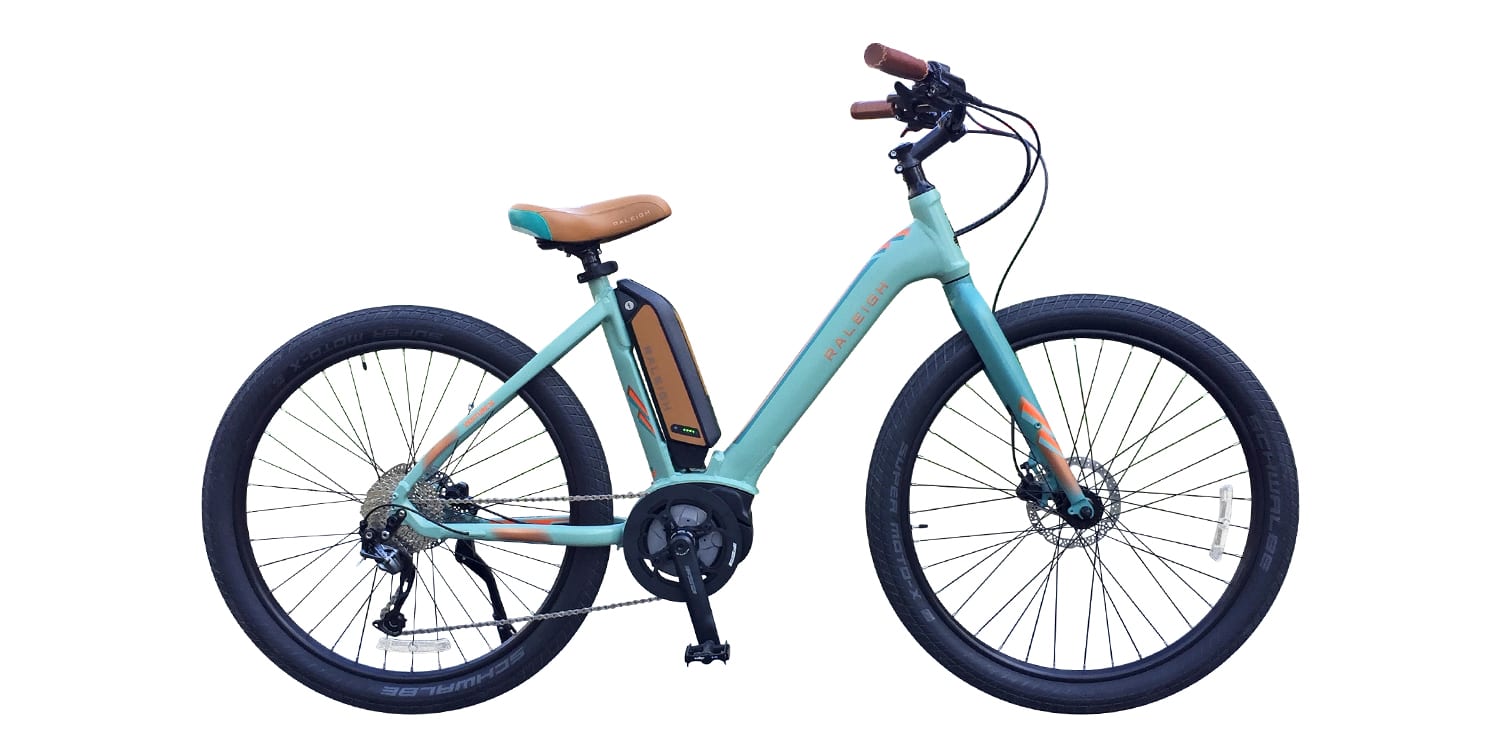
Reader Interactions